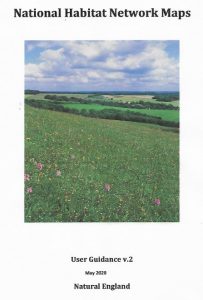National Habitat Network Maps (May 2020)
Whatever your opinion about Natural England (NE) with its vaste network of www links, these links are always useful when eventually found. Such is the case with the latest version of the NHNM, published May 2020. It builds on ‘Making Space for Nature, A Review of England Wildlife Sites and Ecological Network’(Lawton et al., 2010), the 25 year Environment Plan (11 Jan 2018, updated 16 May 2019), Theresa Villier’s (Defra) speech of 15 October 2019),and the Environment Bill (2020) – and other reports! It aims to enhance biodiversity and be good guidance for local considerations in the planning system.
The key to the maps as referred in the title is that its initiative is based on the preparation of ‘individudal habitat network maps’ of the 23 Priority Habitats. All these priority habitats, ranging from calcareous grasslands, through various heathlands,bots, dunes, shingle to Ancient Woodlands and Wood-pasture & Parkland, are all as statutorily listed under Section 41 of NERC (2006).
What is new is that it now recognised generous buffer areas around these protected areas, and this is now shown in magic.gov.uk as different coloured shaded areas. Not only are ‘Primary habitats’ e.g. Ancient Woodland shown, but ‘Associated Habitats’ shown. These are described as ‘Other priority habitat types that form a mosaic or an ecologically coherent group with the landscape and may, for example, be essential for some species associated with the primary habitat.’ The close association of ‘Ancient Woodland’ and ‘Wood-pasture & Parkland’ are typical. There are new enhancement areas proposed ‘Network Enhancement Zones’ (two of them, Zone 1 and Zone 2) where ‘creation of primary habitat’ is recommended (that will actually be a tall order, as some habitats cannot be recreated as per advice from NE). These Priority Habitat patches are also recommended to be ‘buffered by 500m’. That is quite a substantial distance, when some LPAs only currently require 30m buffering, but they will have to get used to greater protection of some habitats, such as Ancient Woodlands that are now regarded as ‘irreplaceable’.
This report will be useful to LPAs, developers and consultants with regard to further protection of the countryside.
